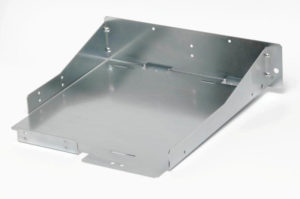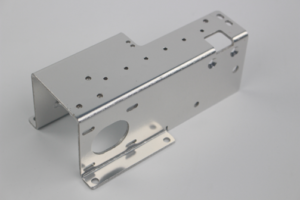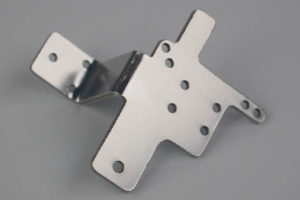Prototech Asia offers a custom sheet metal prototype service to produce your parts in small series (from 1 to 250+ parts). Our capabilities allow us to produce your functional sheet metal parts in as little as 3 working days. We are able to produce partial or complete assemblies with mechanized welding. The principle of sheet metal is to work a sheet of metal using various stages and processes (cutting, folding, etc.) to give it the desired shape. The metal parts obtained can have different thicknesses, large sizes, and complex geometries. Commonly used materials for sheet metal work include aluminum, steel, stainless steel, brass, and copper.
To produce your fine sheet metal parts, we have a complete range of equipment: stamping presses, CNC press brakes, laser cutting machines, wire cutting machines, etc.

Example of sheet metal prototype parts:
Rapid sheet metal: process
The production of prototype sheet metal parts consists of shaping a sheet of metal (‘foldable material’, generally obtained by laser cutting) to give it the desired shape and appearance. We perform the different operations of shaping and folding, punching, stamping and assembly by welding. Various different finishes can be applied (painting, anodizing, etc.). The use of these different processes depends on the selected material, the thickness of the sheet used (according to the desired application of your prototypes or small series) and the selected shape.

Advantages and application of rapid sheet metal prototype
Parts made from sheet metal prototypes are generally less expensive than parts obtained by die-casting and are not able to be produced by CNC machining. The metal sheet can be worked rapidly into almost all shapes and with small or very large dimensions (from a simple bracket to the fuselage of a plane). For prototyping, these parts can, therefore, be used in a wide range of industries such as construction, automotive, furniture, medical, consumer products, electronics, etc.
Examples of common applications in the field of prototyping include hoods, metal enclosures, welded assemblies, chassis, boxes, and cabinets, etc.
Advantages of rapid production of small series:
– Production of a pre-series or ‘proof of concept’
– Rapid production on demand (after-sales service, production line stoppage, etc.)
– Production of spare parts
– Reproductions of parts




